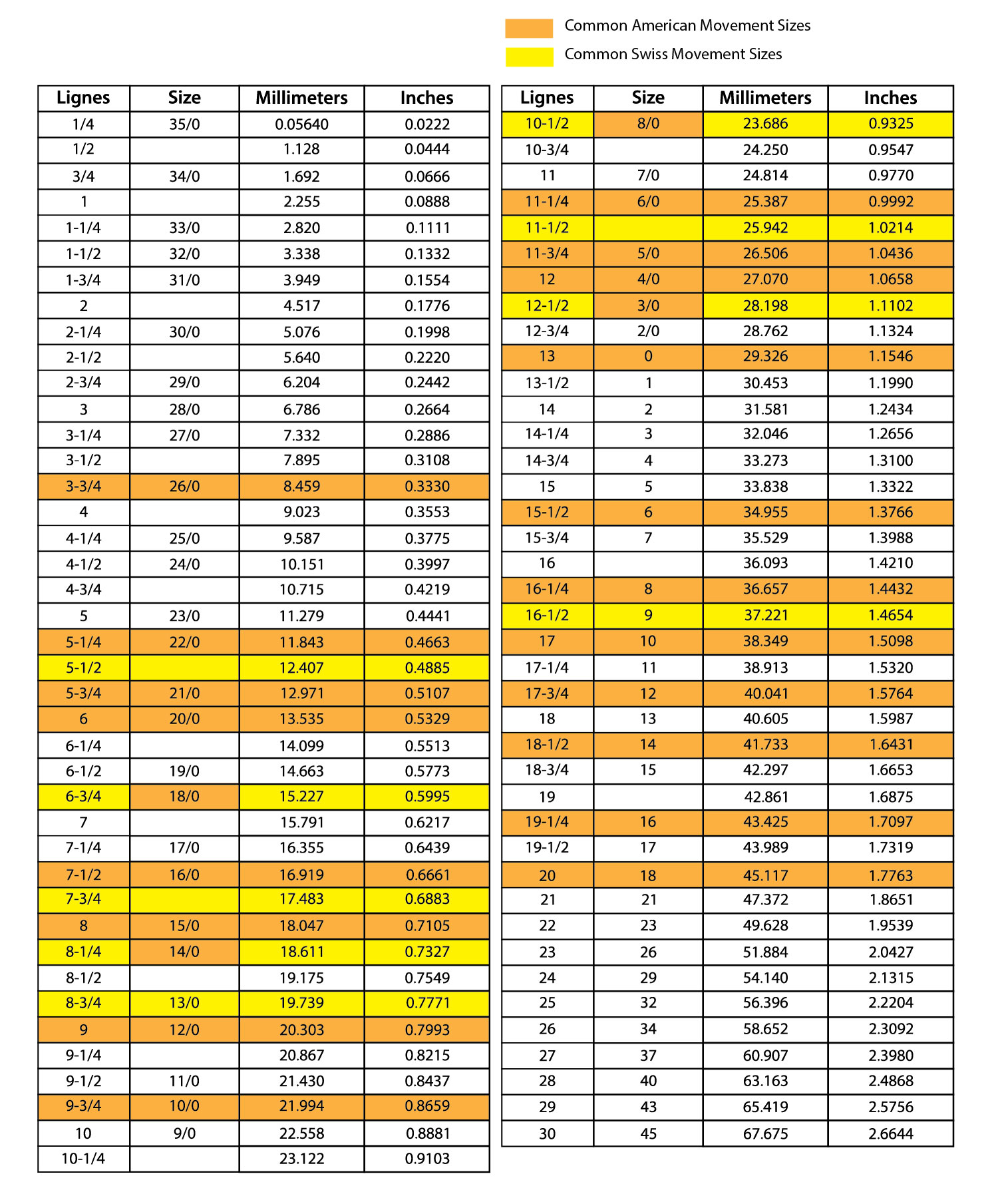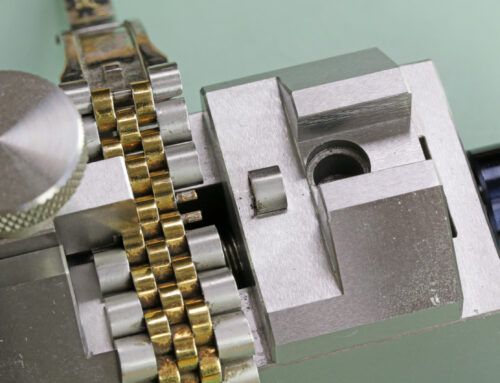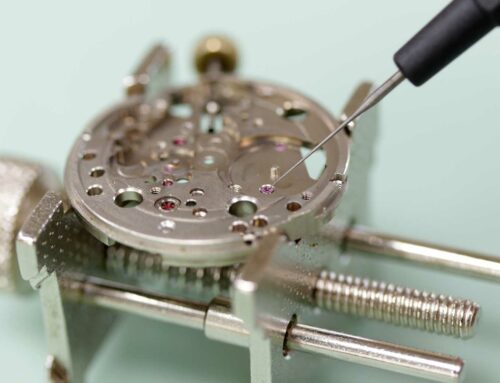There are several different systems used to measure the size of a watch movement and which one to use will depend on who you talk to. No matter what system you use, the larger the number, the larger the watch.
Lancashire gauge
Most pocket watches are described using this system (ex. 18s, 16s, 10/0s). The Lancashire gauge is based on the 0s being 1 inch in diameter, but an additional 5/30″ was added for the “fall”, except when the size is over 16s, in which case 6/30″ was added for the “fall”, except when the larger watch was designed after around 1910 in which case only 5/30″ fall was added. The “fall” is the amount added to the dial plate (bottom plate) to form a flange to keep the watch from falling out of the case. Once watches got smaller than 0s, they first used the notation of “00s” and “000s”, but that quickly became awkward, so they changed to using “2/0s” and “3/0s” instead. This is why you will never see a watch size of 1/0s, and why a 3/0s watch is only 2 sizes smaller than a 0s watch. Wrist watches tend to range from 6s down to 26/0s for the smallest lady’s wrist watches. Learn More
Metric (millimeters)
This system is used by most modern watch companies to describe their watches.
Ligne Gauge
The Swiss used a different system based on the “Ligne” (which is French for “line” and pronounced “line”). One Ligne is 2.2558291mm or 0.088812168 inches. Like the Lancashire gauge, this is an old system but it makes a little more sense than the Lancashire gauge. There are 12 Ligne to one French inch (pouce, French for thumb) and 12 pouce to a French foot (pied).
Here is a conversion chart for watch movements sizes taken from the 1957 Watch Material Distributors Association of America Catalog.






how come I cannot find a nike 36mm watch band / stainless steel ?
We do not currently offer stainless steel watchbands in a 36mm width. We have a selection of leather bands that will fit a 36mm watch at https://www.esslinger.com/watch-bands/?_bc_fsnf=1&Width+of+Band+mm=36
I need a replacement silicone black watch band for a Fossil watch I have. The spring pin is 30mm. I’m a big guy and need a 9 1/2″ to a 10″ band…
Please use the contact us form to inquire about a watch band and if we might be able to order one for you.
https://www.esslinger.com/contact-us
I am just starting to do watch repair and was looking for a Ligne conversion chart and after doing some research i know that there are/were several different definitions for Ligne and the length it measures so i can understand why i have seen a few different conversion rates for Ligne to mm or Ligne to inches if you go to the ETA website they have Movements sized in both Ligne and mm and in comparing those numbers to this chart the 8 3/4 ligne is equal to 19.40mm and the 10 1/2 ligne is equal to 23.30mm but when i look at most of the conversion charts 8 3/4 ligne equals 19.739 and 10 1/2 ligne equals 23.68 it seems like the ETA brand conversions are about 0.3 shorter than the conversion charts show they should be can you please explain the discrepancy
There are several different charts out there for Ligne conversion. This chart information came from the 1957 Watch Material Distributors Association of America Catalog. I cannot speak to the differences between that and the one ETA uses.
I can’t seem to find hand sizes for an old 11.5 ETA-2879 movement (actually Bulova 1133.10).
Is it 150x90x25 or 150x100x20?
I am looking for the right extender for my MK3131 watch. I dont know the measurement since I dont have the device that will measure my watch tounge and extender. I hope you can help me find the right size for extender. Thanks
Please use our watch parts inquiry form found here: https://www.esslinger.com/watch-parts-inquiry/
Someone in the parts department will research your watch with the given information and get back to you as soon as they can with a price and availability of the parts you are looking for and answer any questions you may have.
As a beginner in watch repair/restoration, I need a crystal for my 1907 Elgin open face pocket watch. The crystal diameter is 45.78mm. This measurement falls between Ligne #20 and 21. Which Ligne do I order, 20 or 21?
Most of our crystals are ordered by the mm size. If you have found the correct crystal for you watch, you can order it using the mm size. If you need help determining the correct crystal, then you need to use the watch parts inquiry form.
https://www.esslinger.com/watch-parts-inquiry/
Someone in the parts department will research your watch with the given information and get back to you as soon as they can with a price and availability of the parts you are looking for.